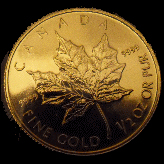Will the US Government Confiscate Your Gold
by Jerry White If you own gold, or you are thinking about buying some as a long-term investment, how concerned should you be that the US government might confiscate it? After all, they forced Americans to turn in their gold in 1933. Could they do it again?
If you own gold, or you are thinking about buying some as a long-term investment, how concerned should you be that the US government might confiscate it? After all, they forced Americans to turn in their gold in 1933. Could they do it again?
Many commentators have weighed in on this issue, though some have gotten their facts wrong. If it is a serious possibility, then can you protect your interests? For example, some dealers say that common-date pre-1933 “rare coins” like Double Eagles would be exempt. First, let’s look at what happened in 1933 and why.
Just what happened in 1933?
By an executive order (No. 6102 issued on April 5, 1933) invoking the anti-hoarding section of the unrelated Trading with the Enemy Act (1917), the US administration under President Franklin D. Roosevelt made ownership of gold illegal due to the “economic emergency” of the Great Depression. The government called in gold coin, gold bullion and gold certificates — and the Treasury paid for them in full at the official price (which was also the market price).
If you owned 100 ounces of gold bullion, worth $20.67 per ounce at the time, you would have been obligated to turn it in to the Fed, which would have paid you $2067 in paper currency for your 100 ounces. If you turned in ten $10 gold Eagles, which were worth exactly $10 each, the Fed would have paid you $100 in paper currency. You would have received 100% of the market value of your gold at the time.
So whether you call it a "forced call-in" or a "confiscation" that was paid for (though paid for in paper dollars), Americans were not allowed to own gold from 1933 until 1975, after FDR's order was rescinded.
After depriving the American public of the right to own gold — something that Americans had been permitted to do since the founding of the Republic — and leaving them with no easy way to hedge against the risk of dollar devaluation, the following year the government devalued the dollar by 41% by raising the gold price from $20.67 to $35. This increased the nominal dollar value of the now-enlarged US gold reserves by 69%. This extreme action stuck in the collective craw of the libertarian members of the public and chokes many Americans to this day.
The action was justified on Constitutional grounds as a legitimate exercise of the government’s right of eminent domain. As required by the eminent domain clause of the 5th Amendment, holders were compensated at market value.
Why did the government call in all gold? The forced call-in was done not as a punitive measure against gold owners but as a way to enrich the government at the expense of the entire US population, whose purchasing power would be reduced in the future by both inflation and the subsequent devaluation. The government’s new-found wealth supported New Deal programs such as Social Security (1937).
Could the government confiscate private gold holdings today?
Federal powers have expanded considerably since the early 1930’s, and, as Rep. Pete Stark said in August 2010, “The federal government, yes, can do most anything in this country.” So we will have to concede that confiscation is at least possible today.
Although they can, would they?
The motivation of the government for a call-in must be to gain some value, not to merely to deprive, discourage or punish investors. In 1933 the purpose was to enable the government to expand the money supply to overcome deflation and to fund the vast social programs of the New Deal, something impossible to do when the country was on the gold standard and the public held significant quantities of gold.
To assess the likelihood of confiscation today, we need to look at what the government could gain by calling in privately held gold. My view is that the Federal government has little to gain by calling in gold today and that therefore the likelihood of confiscation is remote. Because the size and cost of the federal governemt has expanded so much since the 1930’s, and because the quantities of gold currently held by Americans are too small to fund the huge federal budget for more than a few weeks, the government has little to gain by a call-in today.
Furthermore, doing so would send the dollar tumbling toward worthlessness, which would be a disaster when so many dollar-denominated bonds are held as central bank reserves by creditor nations like China. So, while confiscation is certainly possible, we consider it unlikely.
The pseudo-protection afforded by pseudo-rare coins
So are pre-1933 gold coins confiscation-proof? Are they worth the premiums charged for them by coin dealers?
Some coin dealers try to sell investors pre-1933 coins over less expensive bullion coins by suggesting that they were exempt from the 1933 call-in and/or are classified as collectibles and therefore would also be exempt today. This is patently false and misleading. In 1933 the US was on the gold standard, and gold coins were in common circulation. In fact, between 1850 and 1907, US mints made over 100 million $20 Liberties, and between 1908 and 1933, they made close to 65 million $20 Saint Gaudens.
What did the 1933 executive order cover? First, all gold coins were called in, with the following limited exceptions: 1) Gold coin, gold bullion, and gold certificates in an amount not exceeding in the aggregate $100 belonging to any one person, and 2) Gold coin having a recognized special value to collectors of rare and unusual coin. This phrase was intended to exempt high-value rare coins, not the millions of common-date coins in circulation. Pre-1933 common-date coins were the very gold coins called in. If you were a collector, you had to apply to the Treasury for a specific exemption for each coin you owned, and you had the burden of proof that it was a coin of recognized numismatic value.
In 1954 the Treasury issued a regulation that holders of pre-1933 coins (foreign or domestic; circulated or not) no longer needed to prove their special value. Henceforth, pre-1933 coins would be presumed to be of recognized value to collectors. In 1969 the Treasury permitted import of pre-1933 coins, as well as pre-1960 foreign coins subject to an import license. Finally, on December 31, 1974, President Gerald Ford repealed Roosevelt’s 1933 executive order, and it became legal to own and import gold in all forms. While confiscation of gold is improbable, none of these past actions would prevent a confiscation of pre-1933 coins today.
Where did all the “rare” pre-1933 coins come from
Where did all the common-date pre-1933 gold coins come from that are now sold as “rare coins” by coin dealers? To a large extent they were the coins not turned in to the government in 1933 — either because they were the first $100 that an individual was permitted to keep legally or because they were retained illegally or because they were held legally outside the US. Indeed, there were large stocks of US coins held privately and in central bank reserves outside the US, including coins paid by Germany to France as World War I reparations, and coins owned by the Bank of Spain.
The Treasury melted 68 million Double Eagles out of 174 million that had been minted, virtually all of them melted between 1933 and 1939, according to David L. Ganz of Numismatic News, leaving up to 106 million Double Eagles potentially available for sale. Some commentators claim that the Treasury later sold turned-in coins to foreign banks or used them to fund the European reconstruction after World War II, rather than melting them. In any event, after the import restriction was lifted in 1969, large quantities of Double Eagles held in Europe came back to the US, attracted by the high premiums being extracted for them from American buyers who mistakenly thought they were scarce.
So are they “rare coins”? Hardly. Other than the relatively few uncirculated ones (grades MS-60 to 70), pre-1933 Double Eagles are neither rare nor of special value to collectors, and millions more of them will be offered in the future — as long as investors are convinced by coin salesmen to pay the premium.
Could pre-1933 coins be confiscated today if a new confiscation order was issued? Of course. “The federal government, yes, can do most anything in this country.” Because of the very low probability of confiscation and the fact that no one can give you a guarantee that pre-1933 coins would not be called in if there were one, you should avoid paying anything extra to buy them over bullion coins.
How can you protect your gold holdings against confiscation, unlikely as it may be?
Investors who are concerned about confiscation today are often assiduous about keeping their purchases from any one dealer small and their holdings secret. Some avoid keeping their gold in a bank safe-deposit box, and some keep their gold in a non-bank vault outside the country. Most concerned investors would avoid buying ETFs in favor of in-hand physical forms. Some would not buy physical at all, preferring shares of Canadian-based mining companies operating non-US mines.
Some unanswerable questions
Some further interesting questions: If the government were to call in or confiscate gold today, what would the rate of compliance be? Is there a benefit for individual investors to hold gold outside the US? If gold were confiscated, would the government also confiscate silver? How about platinum-group metals? If not, what would happen to their prices?

Precious Metals Investor’s Guide from TradersGame.com
To learn to invest in gold and silver, avoid pitfalls and save money by buying the form that is appropriate rather than one a salesman wants to sell you, read our precious metals investor’s guide, How to Buy Gold and Silver Today. Read it tonight and start protecting your purchasing power tomorrow.
Articles
Who Sets the Prices of Precious Metals?
Why a Rising Gold Price is Bad News
Hyperflation and Gold: Losing Faith in the Dollar
Invest in Gold to Preserve Your Purchasing Power
Buying Gold to Meet your Investment Goals
Pitfalls to Avoid When Investing in Gold
Making your First Silver Trade
Investing in Platinum-Group Metals
Will the US Government Confiscate Your Gold?

